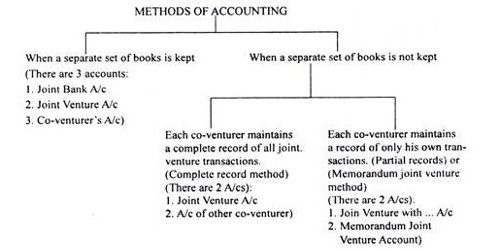Because of the unpredictable times we live in, it can be difficult for staff to form bonds with pupils, patients, or clients. It might be challenging to perform emotional labor that is calm, certain, and warm when one is suffering from burnout, bereavement, or compassion fatigue.
In educational contexts, I have been researching the effects of burnout and compassion fatigue as well as the nature of emotional work.
Workplace culture has become a crucial component in preventing burnout and supporting employees who are going through emotional hardship.
Employers who support employees in observing, experiencing, and responding to others’ suffering at work may see improvements in both employee productivity and job satisfaction.
Compassionate work culture
By assisting us in attending to the suffering of our students, patients, clients, coworkers, supervisors, and leaders in ways that are both professional and appropriate, the emotions of sympathy, empathy, and compassion play a significant part in the development of a compassionate workplace culture.
The first stage in creating a compassionate workplace is sympathy, which is the surface-level recognition of another person’s suffering. It enables us to recognize other people’s suffering.
Empathy pushes us to spend the necessary time and effort learning about and comprehending the distressing person’s response. Observing, feeling, and responding to another person’s pain are all parts of compassion.
The way that employees acknowledge and deal with these emotions varies depending on their job responsibilities and limitations. However, showing compassion in the workplace may make a big difference, whether it be through little acts of kindness or through a prolonged team effort to solve a difficult problem.
Responding to co-workers
The well-known scenario of a worker having difficulty using a new piece of software, such an expense reporting system, is an illustration of how these feelings contribute to the development of a compassionate workplace.
A sympathetic response by a colleague would be to notice that a co-worker is spending too much time inputting their expenses into the management system, and to say, “The new system is tricky! Good luck!” and then walk away.
In order to identify the source of the coworker’s unhappiness, empathy would lead the colleague to try to comprehend what the coworker was currently doing rather than offering a quick remedy. Empathetic listening takes time.
Having experienced a similar level of frustration, the colleague may feel compassion and be moved to take action by setting aside time during the subsequent reporting period to sit with and assist the coworker with submitting their expenses. The coworker may volunteer to bring up the matter as a more significant systemic issue related to software training with management if further action is necessary as a result of sympathetic listening and compassionate action.
Compassion in action
Employers and employees must make time and space for listening in order to develop a corporate culture that fosters compassion. Whether or not the source of a person’s suffering is evident at work, it can still be complicated, multifaceted, and difficult to address.
The ability to care for others over the long term is given through compassion satisfaction, which is the delight and pleasure of helping others.
Although compassion is neither self-contained or easily put out, burnout or compassion fatigue can cause it to slow down or stop acting.
Moral distress
Compassion fatigue is characterized by a shift in perspective toward negativity, a sense of powerlessness and hopelessness, and a disassociation from the person in need.
Physical exhaustion, cerebral exhaustion, emotional exhaustion, a sense of unimportance or unacknowledgement, and indifference or a lack of concern for one’s coworkers and clients are the key signs of burnout.
Employees who want to be helpful but lack the time, energy, or resolve to express their compassion may experience moral distress as a result of these symptoms, which might prevent compassionate people from acting on their feelings.
Employers can ignite sympathy, empathy and compassion by:
- Encouraging rest for fatigued or burned-out workers. Rest is not just a matter of adhering to a regular sleep pattern. Using permitted personal days, de-stigmatizing personal leaves for mentally or emotionally weary employees, establishing a judgment-free return to work plan, choosing a firm stop time for email responses, keeping in mind clients’ needs each day, and more are also included.
- Educating employees and managers about how to access organizational and local resources, such as benefits plans, crisis hotlines and mental health clinics. Knowing where support is available can lessen the burden on workers and leaders because few people are prepared for or should be expected to handle the emotional and mental labor of healing persons who have endured traumatic situations.
- Ensuring that leaders (both formal and informal) model the importance of rest by scheduling, and taking, breaks throughout the workday. A ten-minute solo stroll around the office could be considered a break, as could a stimulating breakfast with coworkers at the neighborhood café.
- Managing the valuable resource employee and manager time thoughtfully. There are probably busier and slower times of the day, week, or year for every organization. Because workload is closely tied to employee burnout, take into account how your organization views time. As the year progresses and slows, for instance, in schools, September and June are incredibly busy times. Education professionals might concentrate on developing strong relationships with students and colleagues by delaying the implementation of new innovations at this time.
- Supporting check-in procedures at work that give managers and staff members the chance to reflect on their own mental and emotional states of being. Such reflection can include asking oneself: “Am I compelled to look away or act?” Are leaders or employees able to shift focus from hopeless worry about all the suffering they can’t relieve to hopeful impact by doing what they can do for each other?
In the meanwhile, if sleeping, taking regular breaks, looking into and using workplace benefits and other resources do not aid in the recovery from compassion fatigue or burnout, one may want to think about taking a longer leave of absence or looking into alternative careers, jobs, or workplaces.
Compassion fatigue or burnout do not extinguish the flames of sympathy, empathy, or compassion, but stress and situation may momentarily stifle them. By identifying daily behaviors that can promote a caring corporate culture, these feelings can be re-ignited.
















